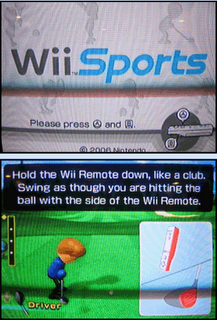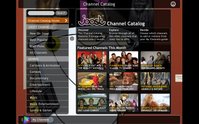10 tips for Office Evacuation Usability
Previous to this evacuation our local fire marshal explained how to exit the building, utilizing the stairs, staying to one side to let firemen up and such, and to group ourselves to keep an accurate headcount. All of which seems perfectly reasonable in abstract. From this I have produced 10 usability tips.
Tip 1: Stay to the right
While it was stressed in our evacuation meeting there were still some people who insisted they were better than the rest and walked down the left side. While they were few and far between it's better to practice safe habits before the actual event, so stay to right.
Tip 2: Know where you are
When egressing the building there are very few indicators of what floor you are on, these indicators are on the backs of the doors about head height. Unfortunately these doors are open and there are heads in the way of seeing where you are. It would be much better to have large day-glow numbers on the landings of the floor, preferably 4 foot wide so they are easily visible.
Tip 3: Don't trip
Even though this was just a drill there was one poor soul who tripped down a few stairs. Luckily he caught himself on the handrail and was un-injured but it's a word to the wise to always use the handrails. This not only keeps you nice and tight to the right, but it helps keep you from injury. Reflective tape on the steps would also help.
Tip 4: Know how to help
Building on tip #3 raises the possibility of someone getting injured. This is one item that is not generally covered. If someone is injured, and you need to leave them behind it would be a really good idea to know where this person is to send help to. The big numbers from Tip #2 would be a big help. If you need to get someone out it would be a good idea to familiarize yourself with the fireman's carry. This is something you learn as part of boy scouts doing first aid. There are many ways to do it, so knowing how will keep you from injury if you need to do it.
Tip 5: Don't clog the exits
Get away from the building. One of the reasons our fire marshal has set up meeting spots away from the building is to avoid congestion at the exits. Unfortunately, people flock like penguins seeking protection and as a result now block these meeting area entrances. If you are a leader move your people from the entrances.
Tip 6: Keep track of everyone
One of the items we tried when leaving was taking down a set of people in smaller groups to keep track of those on the floor and in the building. This single person approach does not work. I would suggest having a line leader and a sheep herder. The line leader goes first and leads the group down, while the sheep herder knows how many people are in front of him (in the group) and acts as a backstop for when other groups filter in from other floors.
Tip 7: Stay together
While we egressed there were some folks that though they were too cool for school and decided to make their way somewhere else. This is not only a problem for the line leader (and sheep Herder) but it prevents the overall persons in charge from getting an accurate count of people in the building. While it is better to know how many people have left I would maintain it's more important to know that everyone in your group got out. Following the sheep herder model will help get the small groups out.
Tip 8: Use a new exit
Another helpful scout tip is to know two exits from any location and know of any crossover floors (floors that have access to multiple staircases). If you do a building evacuation test, tell your folks to find a new staircase than the one they use, or better yet, post someone in front of the most popular one and say, "this exit is blocked by fire, go find another one", forcing them to think.
Crossover floors would also be a great thing to stencil to the wall of the evacuation stairs.
Tip 9: Visible means safe
For drills and where possible for evacuations you should train the persons in charge to wear their special hats/shirts etc. If you are a fire warden, wear the fire warden hat. This will make it easier for people to find you. When choosing a line leader, choose someone with a colorful shirt, or dress, anything out of the ordinary to jog your memory in a time of crisis.
Tip 10: Recap Afterwards
Like any project it pays to get together the next day and re-cap how you think it went to see if in the future you can do anything better. Drills should be treated as close to the real thing as possible, if people make a game or joke out if it they won't know what to do when a situation occurs.
The 10 minutes may lead to better and safer evacuations.

 The Nintendo Wii is a groundbreaking concept in gaming. While other systems have expanded into higher resolution graphics the Nintendo Wii’s graphic level hasn’t changed. Much like the user-centric nature of the Apple computer line, Nintendo has developed a gaming system with the user in mind.
The Nintendo Wii is a groundbreaking concept in gaming. While other systems have expanded into higher resolution graphics the Nintendo Wii’s graphic level hasn’t changed. Much like the user-centric nature of the Apple computer line, Nintendo has developed a gaming system with the user in mind.  Thanks to the fine folks at
Thanks to the fine folks at 



